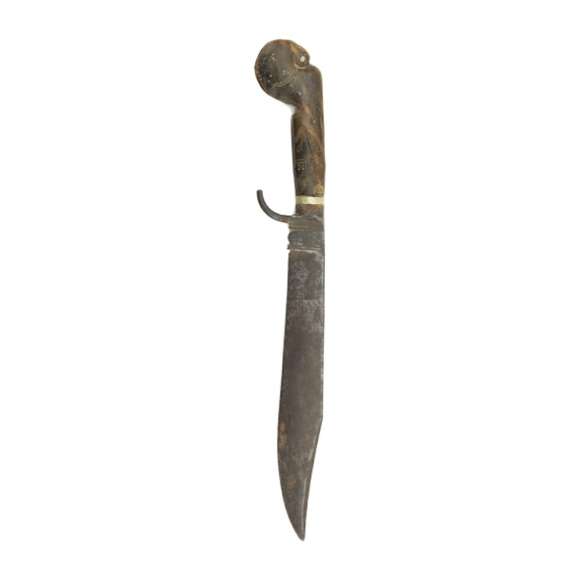Language: Sinhalese
Source: In general use
Description
Ītala (ඊතල) is the Sinhalese word for "arrow".
Related terms
- Dunna (දුන්න) or "bow".
- Maha dunna (මහා දුන්න) or "great bow". Also called usa dunna (උස දුන්න) or "high bow".
- Miṭi dunna (මිටි දුන්න) or "bundled bow".
- Bämmi dunna, a type of composite bow made of different types of wood and sometimes with horn.
- Duna lanuva (දුන ලනුව), "bow string".
- Ītala (ඊතල), "arrow".
- Ī koppuva, "quiver".
On Sri Lankan arrows
"The Arrows are from about 3 feet to 4 feet in length, and have shafts half an inch thick ; they vary greatly in the size of their steel heads (Itale), which are from 24 inches up to almost 18 inches in length, the usual size being 4 or 5 inches. All the more modern heads are practically of one type (Fig. 208), a thin narrow leaf shape, supposed to represent a leaf of growing rice; they have distinct rounded butts, with a narrow stem or tang which is driven into the shaft, and they are invariably unbarbed. The sides of the blade are usually nearly parallel in the central part ; the tip is more or less rounded, and the sides converge to it in straight lines (Figs. 206, 208 and 209). The British Museum has one of a slightly different shape (Fig. 207), with a blade wider near the stem, like those of the Vaeddas. A similar form is seen in some wihara paintings (Figs. 210 and 211), and arrow-heads of this type are clearly indicated in two mason’s marks of the twelfth century (Figs. 212 and 213), the date being determined by the shapes of letters cut by other masons on adjoining stones. I have already given a reference in the Mahavansa to the ‘broad arrows' of the Sinhalese in the twelfth century.
The arrows have usually four feathers of the pea-hen’s wing, but sometimes only three. As I possess one with six feathers it is clear that the number varied according to the owner’s fancy. Hard gum or lac is occasionally placed, as a protection from fraying, over the fine string which is used for tying them on the shaft. The shaft is slightly narrowed between the notch and the feathers (Fig. 214); in this respect it differs from the Vaedda shaft.
I have not seen a crescent-headed arrow, such as Rama and his brother are described as using against the Rakshasas; it is an extremely ancient form of the weapon, and is mentioned in the Rig Veda (vi, 75, 5) as "the shaft with venom smeared, tipped with deer-horn, with iron mouth." It is, however, of far greater age than Vedic times, and long and most beautifully chipped flint specimens, some of the finest examples of chipped flint work ever executed, having a wide V-shaped cutting edge, with extremely fine and regular serrations, of pre-dynastic date, that is, dating from prior to 4500 B.C., have been obtained in Egypt, and are to be seen in the British Museum.
The illustration of a Yaksha given already (Fig. 9), which is copied from a painting of uncertain date in a wihara of the North-western Province, shows the manner of holding the arrow and string, which is drawn by the first and second fingers, one being on each side of the arrow. The same figure also contains an illustration of a form of Quiver, ī-kopuwa, which in this instance holds seven arrows. It is slung at the side, but the usual position may have been on the back, as in early Indian reliefs." 1
-H. Parker, 1909

Illustration from Parker, Ancient Ceylon.
Notes
1. H. Parker; Ancient Ceylon. Luzac & Co, London, 1909. Page 540-541.






